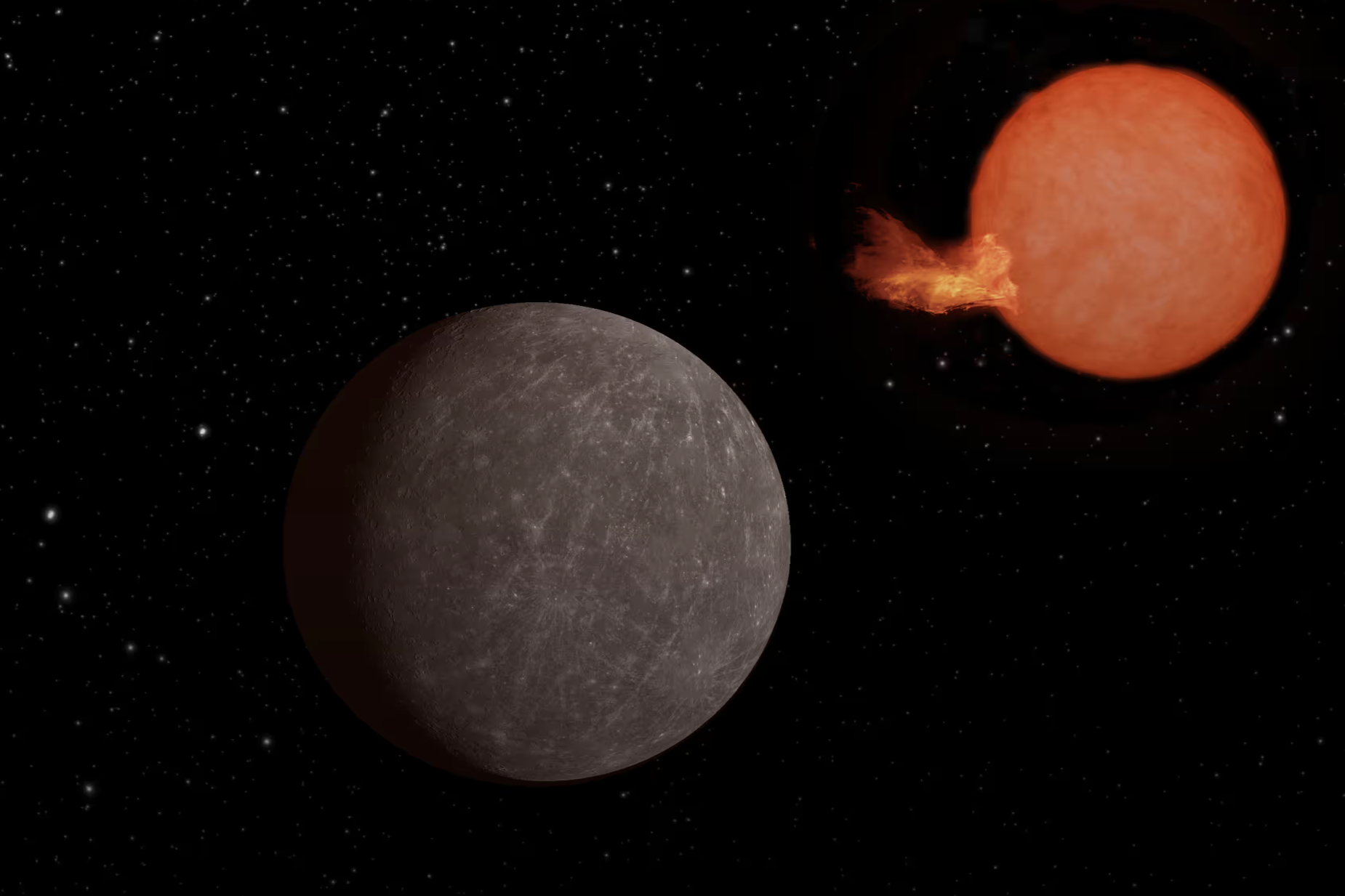The Independent's journalism is supported by our readers. When you purchase through links on our site, we may earn commission.
New Earth-sized planet discovered next to star that will outlive the Sun
Scientists say Speculoos-3 b exoplanet orbits a star that will be one of the last to shine when the universe grows cold and dark

Astronomers have discovered an Earth-sized exoplanet orbiting a star with a lifespan 100 times greater than the Sun.
Speculoos-3b is 55 light years away – more then 10 times further than the closest known exoplanet Proxima Centauri – and forms part of only the second ever planetary system discovered around an ultra-cool dwarf star.
The miniature star is around the same size as Jupiter and twice as cold as our Sun, while also being 100 times less luminous. Its lifespan means it will be one of the last stars left shining when the universe grows cold and dark.
Little is known about ultra-cool dwarf stars due to their low luminosity, however they are ubiquitous throughout the Milky Way.
“Speculoos-3 b is practically the same size as our planet,” said Michaël Gillon from the University of Liège, who led the research.
“A year – an orbit around the star – lasts around 17 hours. Days and nights, on the other hand, should never end. We believe that the planet rotates synchronously, so that the same side, called the day side, always faces the star, just like the Moon does for the Earth. On the other hand, the night side would be locked in endless darkness.”
Despite its star being significantly cooler, the Speculoos-3b planet receives almost 16 times more energy per second from its star than the Earth does from the Sun.
“In such an environment, the presence of an atmosphere around the planet is highly unlikely,” said Julien de Wit, a professor at Massachusetts Institute of Technology (MIT) and co-director of the Speculoos Northern Observatory on the island of Tenerife.
“The fact that this planet has no atmosphere could be a plus in several respects. For example, it could enable us to learn a great deal about ultra-cool dwarf stars, which in turn will make possible more in-depth studies of their potentially habitable planets.”
The findings were published in the journal Nature Astronomy on Wednesday, in a study titled ‘Detection of an Earth-sized exoplanet orbiting the nearby ultracool dwarf star Speculoos-3’.
The discovery comes just days after scientists detected a thick atmosphere around a planet twice as big as Earth in a nearby solar system.
The 55 Cancri e planet has been described as a “super Earth” due to its size, though astronomers are yet to determine the exact makeup of its atmosphere.
Subscribe to Independent Premium to bookmark this article
Want to bookmark your favourite articles and stories to read or reference later? Start your Independent Premium subscription today.

Join our commenting forum
Join thought-provoking conversations, follow other Independent readers and see their replies
Comments